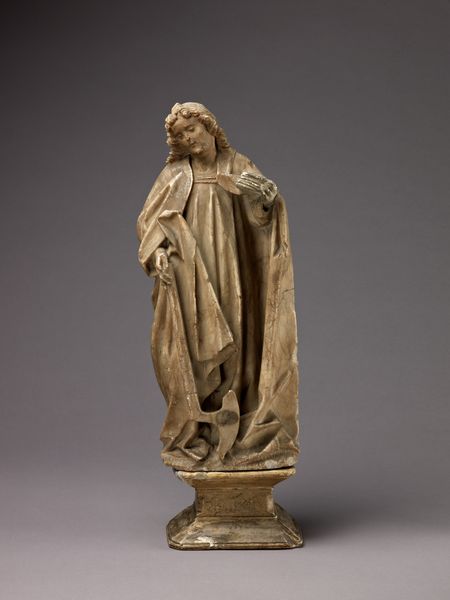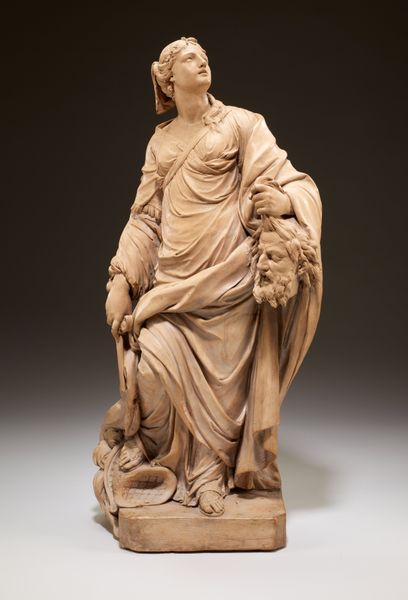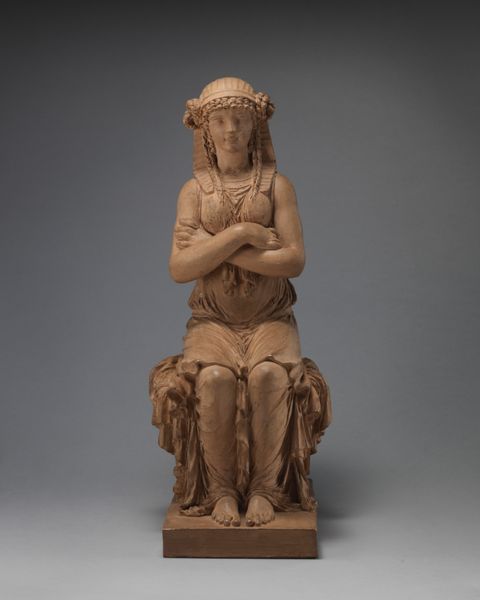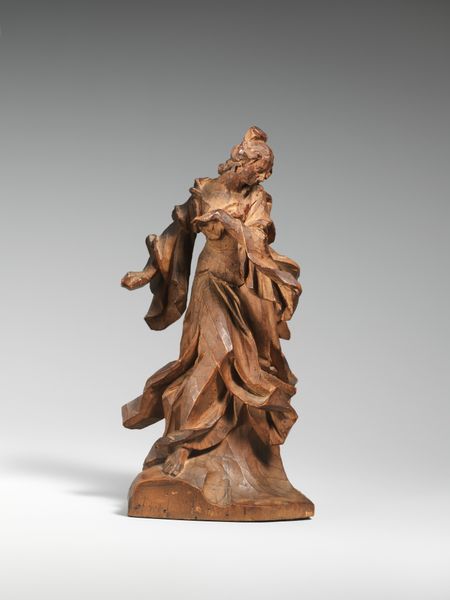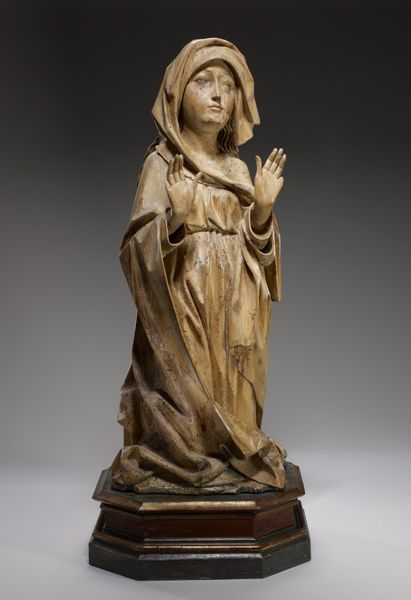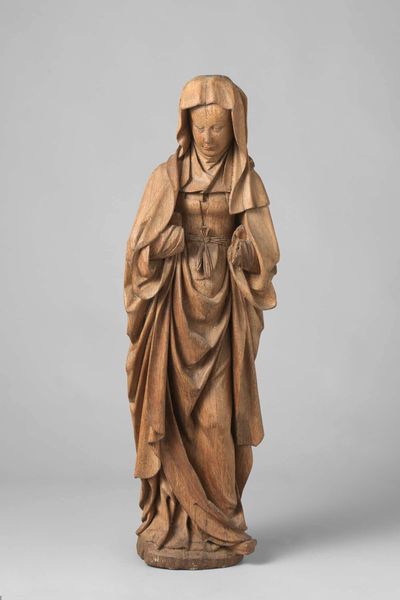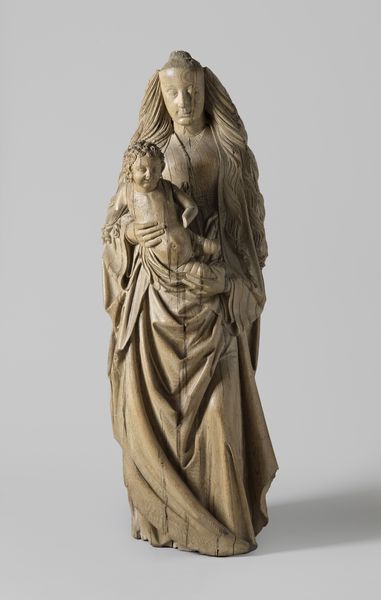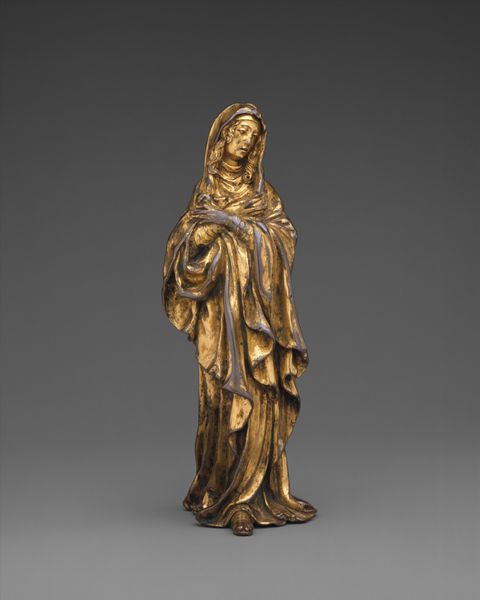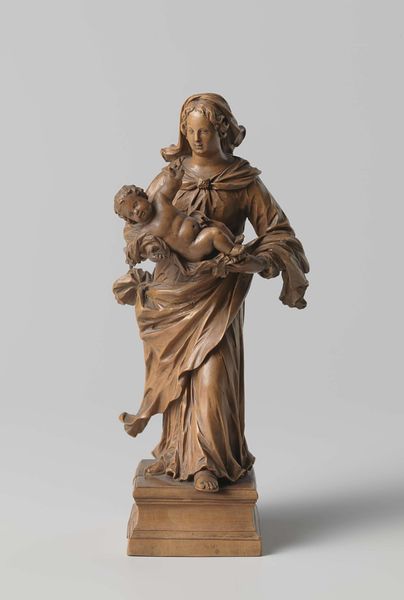
sculpture, terracotta
#
portrait
#
medieval
#
sculpture
#
figuration
#
sculpture
#
terracotta
#
italian-renaissance
Dimensions: Overall: 17 5/8 x 10 x 9 1/2 in. (44.8 x 25.4 x 24.1 cm)
Copyright: Public Domain
Around 1300, Goro di Gregorio created this ‘Enthroned Virgin’ from terracotta, an everyday material for its time. Terracotta, meaning ‘baked earth’ in Italian, is a humble material, but its very ordinariness lent itself well to devotional images. It's easy to see how di Gregorio took advantage of the clay’s inherent qualities. Its pliability allowed him to capture the flowing drapery and the Virgin's serene expression, while the firing process gave the sculpture a lasting durability. This wasn't marble or bronze, the materials of grand state commissions. Terracotta allowed for more intimate, accessible religious art. Di Gregorio likely employed simple modeling and carving techniques. He skillfully built up the form, paying careful attention to the weight and texture of the clay, creating a palpable sense of the Virgin's presence. Thinking about the material and the making of this sculpture helps us understand its significance beyond just religious iconography. It embodies a connection to the earth, a directness of expression, and a democratization of art that challenges the traditional hierarchy between fine art and craft.
Comments
No comments
Be the first to comment and join the conversation on the ultimate creative platform.
